Just as we only look at the building and often neglect the foundation that supports it, the architectural design process is the bedrock of construction project management. It’s a lengthy process that follows the construction project from inception to completion.
As the construction project unfolds, there may be external impacts, regulations and other forces in addition to internal forces. The set of drawings and documents will only guide the construction project to a successful completion if they’re free of errors, making the architectural design process that much more important.
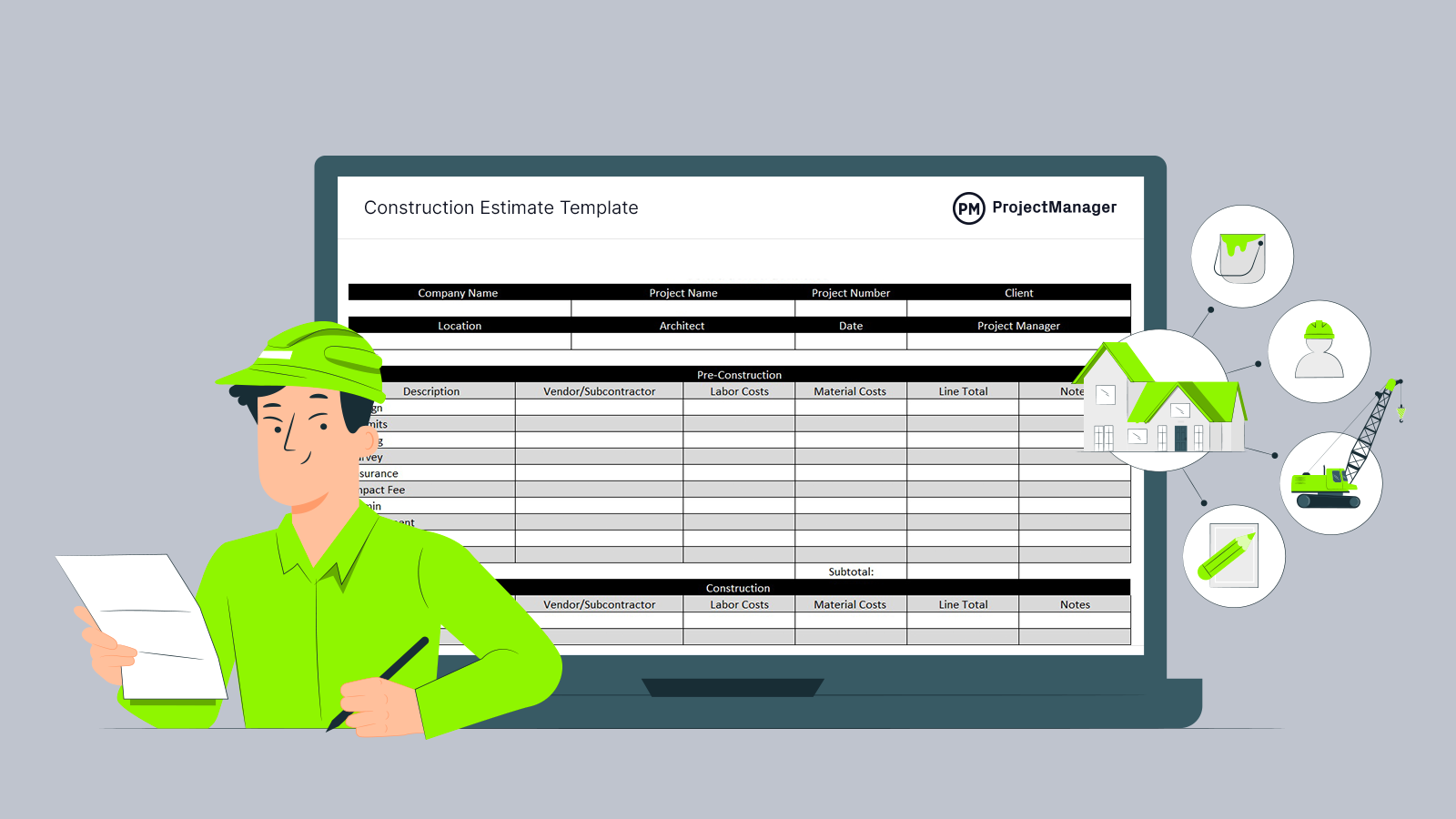
Get your free
Construction Estimate Template
Use this free Construction Estimate Template for Excel to manage your projects better.
What Is the Architectural Design Process?
The architectural design process is how a construction project is developed and analyzed in set stages. This process is usually broken down into seven phases to provide order to the project by identifying periods of review, creating a structured release of design information and determining the natural stages of invoicing.
The construction of a building is complicated, heavily regulated and expensive, and general contractors don’t want to revise the architectural design once the project breaks ground. After the project is completed, there’s little that can be done without demolishing the structure and starting from scratch.
That’s why the architectural design process is so important; it organizes the management of the project and offers clear communication on its design intent. The phases of the architectural design process allow the production information to be efficient and transparent to reduce risks that could result in costly, timely delays.
Having project management software to organize the architectural design process helps further reduce the risk of costly mistakes. ProjectManager is construction project management software with unlimited file storage that helps you manage every phase in the architectural design process. Use our robust list view to track your architectural design work through all project phases. Get started with ProjectManager today for free.
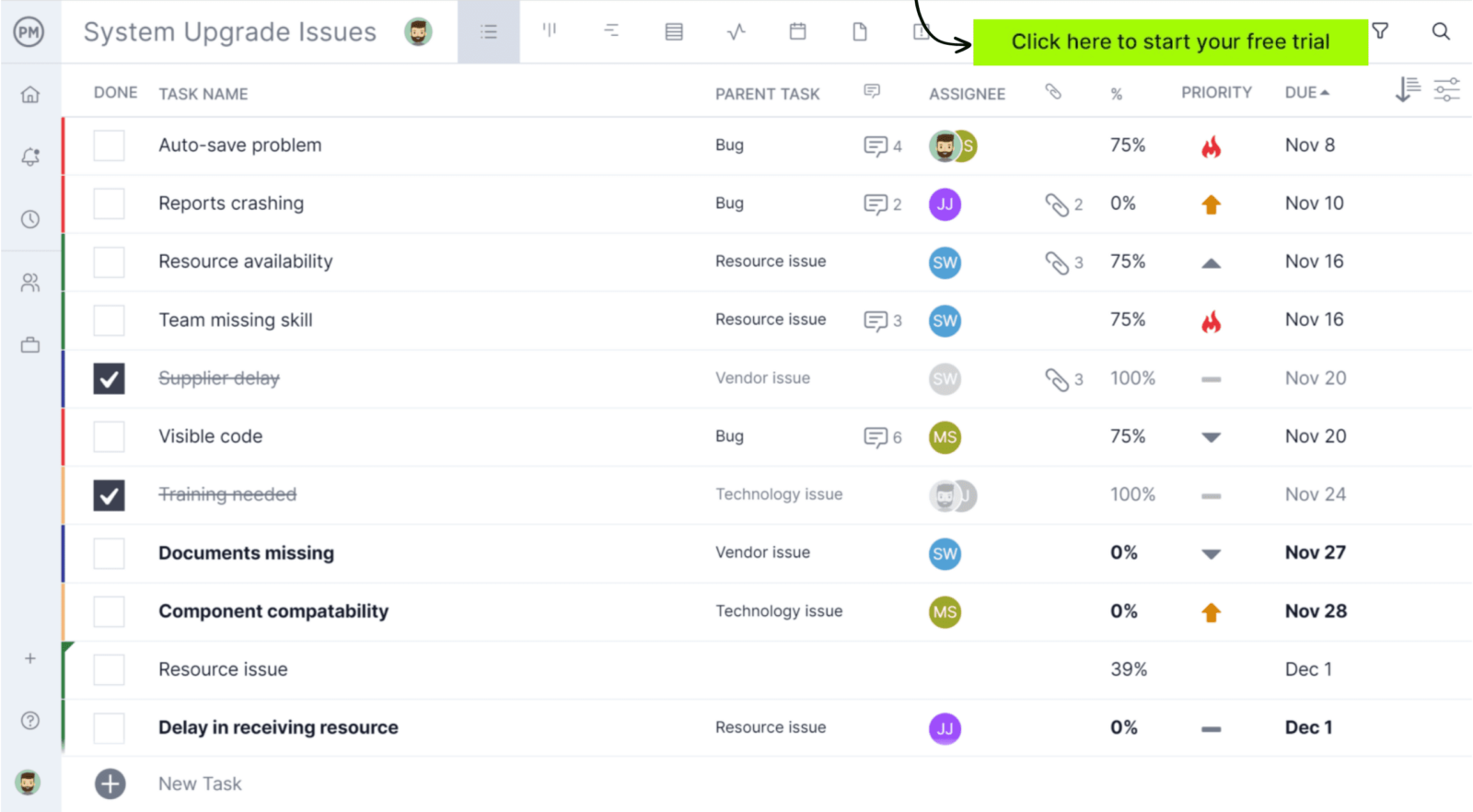
7 Phases of Architectural Design Process
What makes construction project management exceedingly difficult is the coordination necessary to connect the involved parties. Think about it; there are architects making the drawings, contractors executing blueprints and engineers making sure that the numerous systems involved have structural integrity. That doesn’t include the other teams working on-site as well as the suppliers, vendors and more.
The architectural design process is how these different parties work together, but for that to happen, there needs to be a process. The architectural design process is made up of seven phases: pre-design, schematic design, design development, construction documents, building permits, bidding and negotiation and construction administration. These phases put realistic project deliverables and deadlines in place.
1. Pre-Design
We start with pre-design, often referred to as the programming phase, which kicks off the architectural design process. At this stage, the architect works with the client to understand the plot of land on which the project will take place. They’ll also discuss if there are other structures already on the site and what the client wants for the building they’re commissioning.
This means the architect needs to conduct research and collect information. Some things they must know are local zoning and land-use restrictions, project scope, client desires, scale, surrounding buildings, neighborhood, site conditions, building codes and more. After this, they will brainstorm, sketch and model various design ideas.
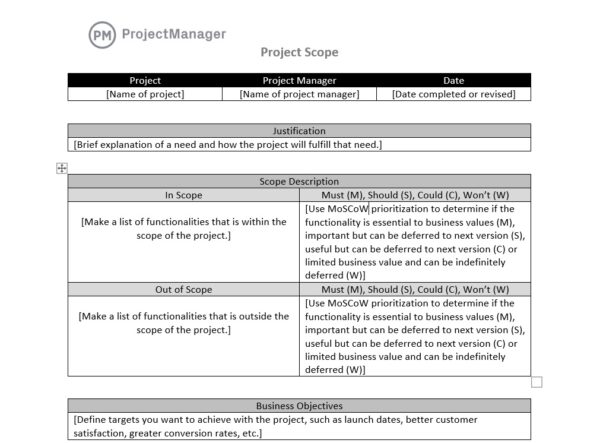
2. Schematic Design (SD)
Now you want to develop the designs and present them to the client. This means developing a design proposal. Architects will create site plans, floor plans and building elevations. Also necessary are structural, mechanical, electrical, plumbing and heating, ventilation and air conditioning (HVAC) systems.
At this point, you’ll want to show your ideas to others and get their feedback. Architects meet regularly with their clients to show them the drawings of different variations to help everyone decide on which design is best. Disagreements are reduced if the architect takes the client’s needs into account when designing.
After the meetings with the client, the architect analyzes the feedback and makes changes. It’s always good to make changes at this phase in the design process to avoid adding costs and potentially delaying the construction schedule if done at a later date. This process of meeting and revising will continue until the design is agreed upon by all parties.
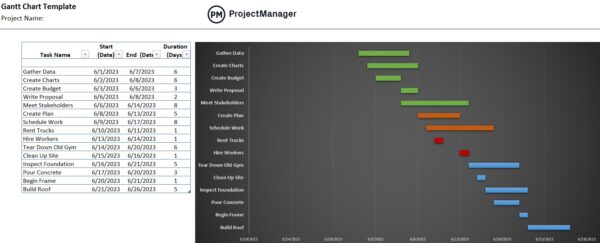
3. Design Development (DD)
Now that the client is happy with the design, it’s time to create a more detailed plan. Those details include the placement of doors and windows and any adjustments to the building form. At this stage, a structural engineer will join the design team to help come up with more accurate estimates for the project.

The exterior and interior finishes are then presented to the client and materials, fixtures and other finishes are discussed. There will be a back and forth with the client often determined by costs, which will lead to both sides having to compromise. However, at the end of this stage, the building’s exterior, layout and dimensions are finalized and most of the materials have been chosen. There might still be some minor changes to the building design.

4. Construction Documents (CD)
Here’s where the design services move into working construction drawings. Of all the phases, this one tends to take the most time. It’s important that architects make sure their designs are well-planned for execution. The construction project documents also must be approved.
It’s possible that an in-house construction contractor will join the development team during this phase of the architectural design process. At this point, the required drawings for the permit set and the construction set are needed. The building permit set is delivered to the permitting authority and can take a long time to approve, so it’s advisable to get this done first. The construction set has the details and dimensions of the design for the builder to use throughout the process.
5. Building Permits
The city or county will review the building permit set and check if it’s structurally sound and follows local zoning laws and building codes. This process is imperative to avoid dangerous mistakes for which the architects, builders and property owners can be liable. It’s also illegal to commence construction without first securing permits for the job.
The time to pull permits for the construction project can vary. Smaller construction projects might only take a couple of days, especially if they’re simpler. But larger, more complex or historical construction projects can take substantially longer, taking months versus days.
Related: 8 Free Excel Construction Templates
6. Bidding and Negotiation
This phase refers only to architectural firms that aren’t building the project themselves. The bidding process is when architects contract with a construction company that will do the actual construction. The process is expedited if permits have already been pulled.
The architect will advise the client when bids come in to find the best fit for the project, including qualifications and costs. This can be done through negotiated bids where builders go through construction documents and review materials and schedules. Keep in mind that sometimes the client already has a construction company in mind for the project.
A competitive bid process is when the architect looks over the local construction companies and their past projects. Then, the bidding process starts and construction companies will compete for the job, a process that usually takes three weeks. Quality, cost and experience are considered when choosing the winning bid. In both bidding cases, the winning construction company will contract with the client, not the architect.

7. Construction Administration (CA)
The final phase involves the architect frequently visiting the construction site to answer questions and deal with issues that arise. Having access to the architect is one way to avoid costly delays. The regularity of the architect’s visits depends on the size of the construction project and it could be weekly or monthly. The construction crew is in charge of the development of the project from this point on. This phase will last as long as it takes to complete the construction.
ProjectManager and the Architectural Design Process
The architectural design process is long, involved and complicated. To manage all seven stages, you need ProjectManager, construction project management software. Our software is your central hub for all construction project drawings and documentation. The collaborative platform connects everyone on the project team and gives them access to all files whether they’re in the office, on the construction site or anywhere else.
Stay Connected With Real-Time Data
When you’re dealing with many different parties, having clear and simple communication is essential to a smooth process. Our online software allows you to share files, comment on work, tag others to bring architects, builders and vendors into the conversation and more. To make sure you don’t miss any notifications, there are email alerts and in-app notifications so you don’t have to leave the tool.
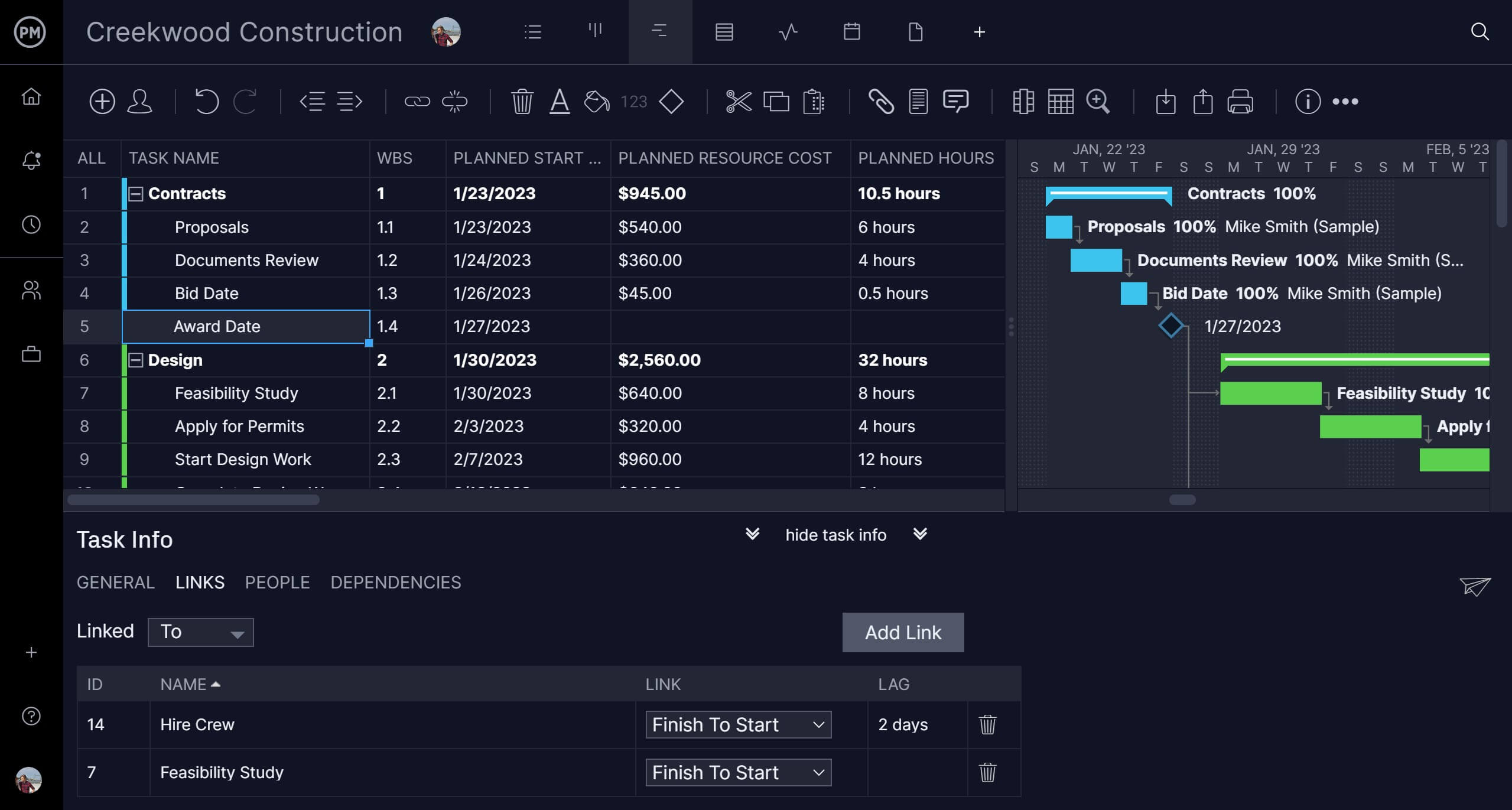
Coordinate Work on Robust Kanban Boards
The back and forth and revising drawings can be hard to manage and you don’t want a client’s change to go unnoticed until it’s a costly and time-consuming delay. Our tool has multiple project views so you can track progress on Gantt chart, sheet, calendar and list views. If you prefer a more visual workflow, utilize our kanban boards. Columns are preset at to do, doing and done, but customizable to match your process.
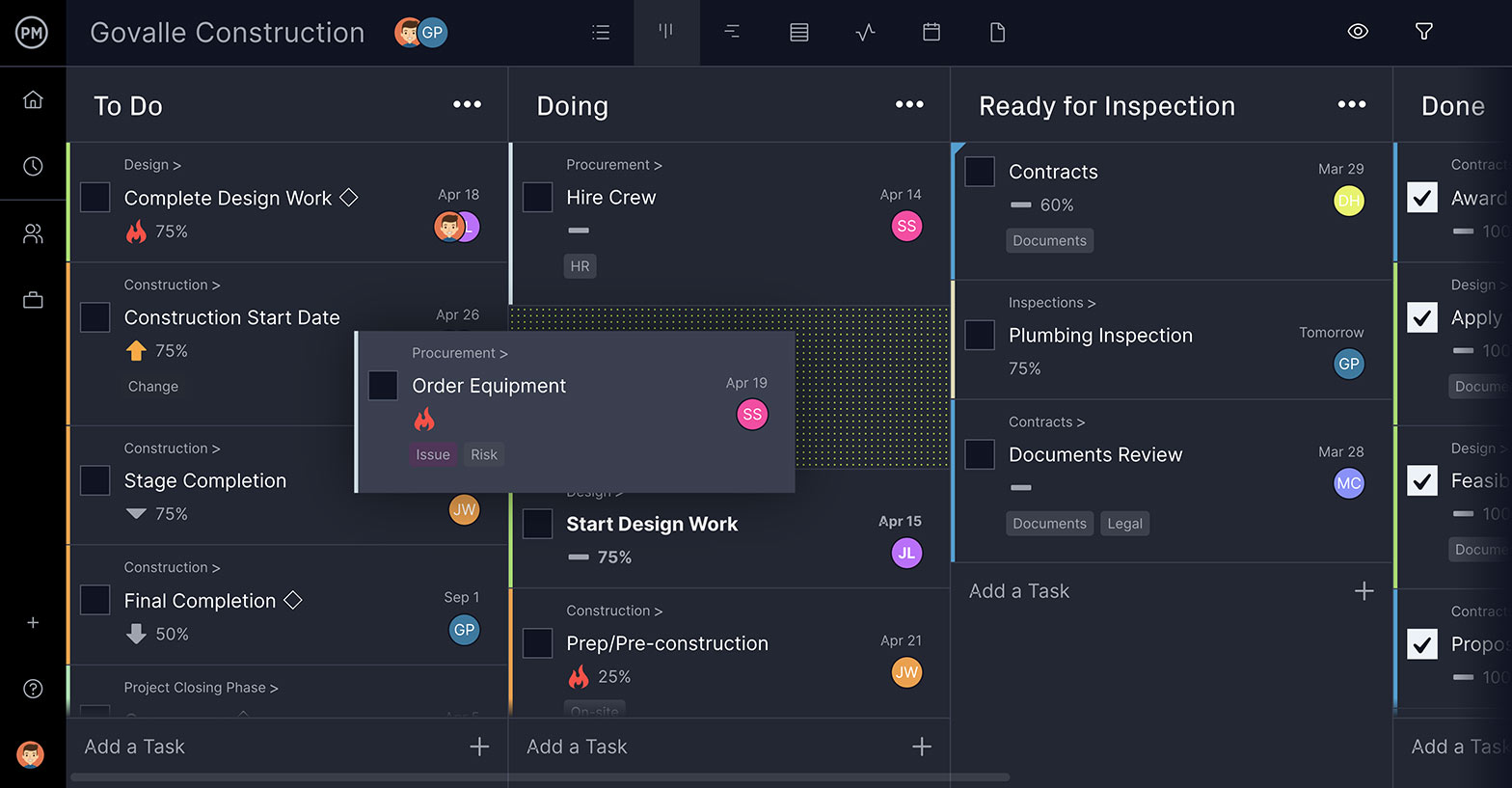
Once construction has started, our tool can help you plan, schedule, monitor and track your resources. Real-time dashboards give you a high-level view of progress and performance while customizable reports dive deeper into the data. Architects, builders and clients are all updated with real-time data for more insightful decisions.
ProjectManager is award-winning software that manages the architectural design process. Unlimited file storage gives you a centralized hub for all construction project files and a collaborative platform connects everyone involved on the job to facilitate the process without substituting quality. Get started with ProjectManager today for free.

